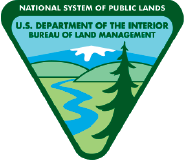BLM seeks public comment on renewing an existing pesticide use permit
Organization:
BLM Office:
Media Contact:
 Barstow, Calif. - The Bureau of Land Management, Barstow Field Office, has made available for public comment an Environmental Assessment for the Kern River Gas Transmission Company’s proposed renewal of its Pesticide Use Permit (PUP) for an existing natural gas transmission system on public lands.
Barstow, Calif. - The Bureau of Land Management, Barstow Field Office, has made available for public comment an Environmental Assessment for the Kern River Gas Transmission Company’s proposed renewal of its Pesticide Use Permit (PUP) for an existing natural gas transmission system on public lands.
Public comments on this EA must be submitted to the BLM by March 1.
Kern River is applying to renew its existing PUP to continue use of pre- and post-emergent herbicides at fenced pump stations and the use of herbicide treatments on weed species within the Kern River Gas right-of-way. The right-of-way in California begins at the California-Nevada state line and parallels Interstate Highway 15, terminating at the Daggett Interconnect Meter Station.
The EA can be viewed online through ePlanning, or by contacting the Barstow Field Office at 2601 Barstow Road, Barstow, CA 92311. The public is encouraged to provide written comments via mail: BLM Barstow Field Office, 2601 Barstow Road, Barstow, CA 92311.
The public is reminded that before including personal address, phone number, email addresses, or other personal identifying information in submitted comments to be aware that the entire comment, including personal identifying information, may be made publicly available at any time. The public may request the BLM withhold personal identifying information from public review, however, the BLM cannot guarantee that it will be able to do so.
For further information, contact Jeff Childers, Associate Field Manager, 760-252-6020, or by emailing [email protected].
The BLM manages about 245 million acres of public land located primarily in 12 western states, including Alaska, on behalf of the American people. The BLM also administers 700 million acres of sub-surface mineral estate throughout the nation. Our mission is to sustain the health, diversity, and productivity of America’s public lands for the use and enjoyment of present and future generations.
